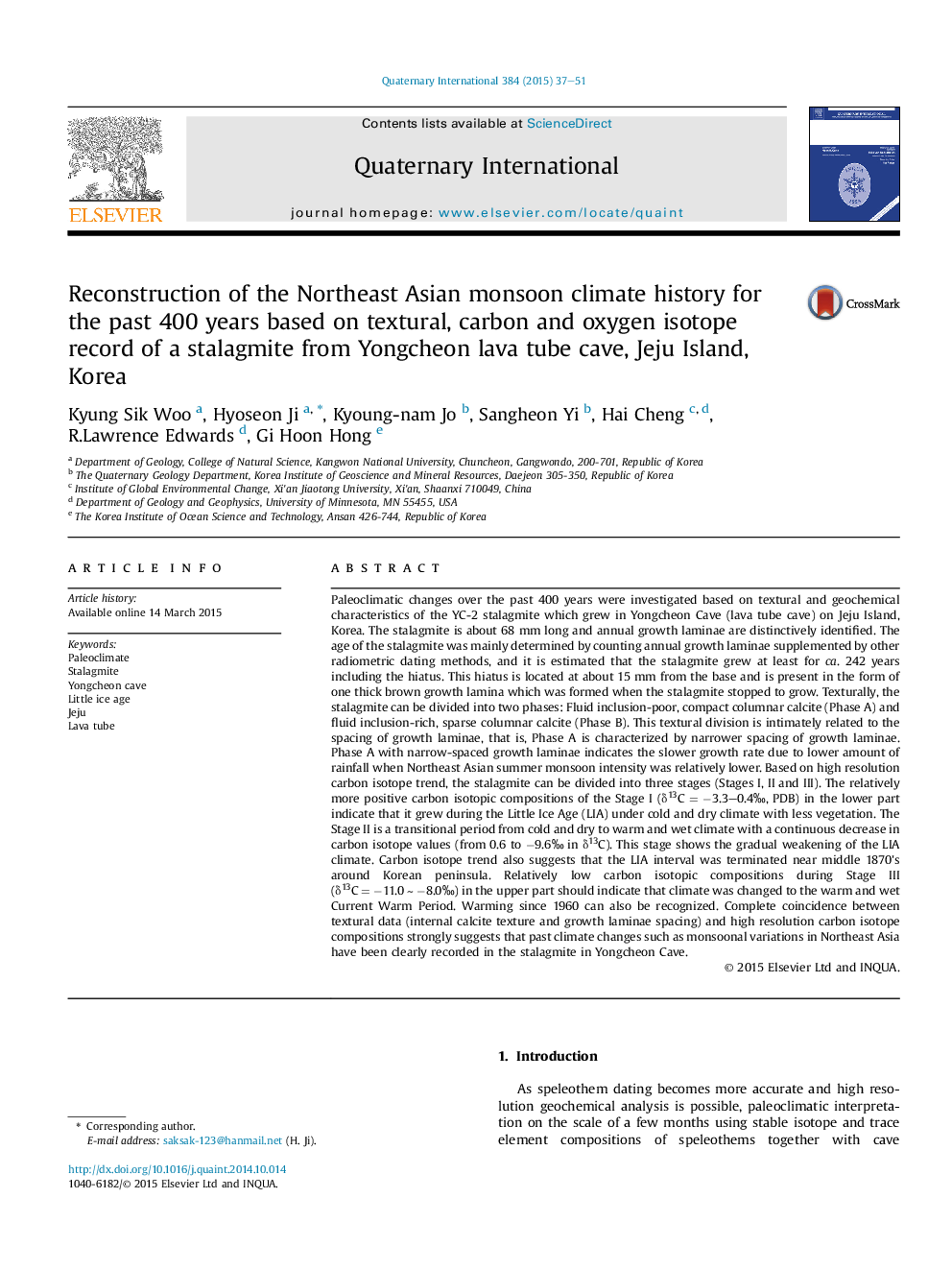| کد مقاله | کد نشریه | سال انتشار | مقاله انگلیسی | نسخه تمام متن |
|---|---|---|---|---|
| 1040504 | 1484114 | 2015 | 15 صفحه PDF | دانلود رایگان |
Paleoclimatic changes over the past 400 years were investigated based on textural and geochemical characteristics of the YC-2 stalagmite which grew in Yongcheon Cave (lava tube cave) on Jeju Island, Korea. The stalagmite is about 68 mm long and annual growth laminae are distinctively identified. The age of the stalagmite was mainly determined by counting annual growth laminae supplemented by other radiometric dating methods, and it is estimated that the stalagmite grew at least for ca. 242 years including the hiatus. This hiatus is located at about 15 mm from the base and is present in the form of one thick brown growth lamina which was formed when the stalagmite stopped to grow. Texturally, the stalagmite can be divided into two phases: Fluid inclusion-poor, compact columnar calcite (Phase A) and fluid inclusion-rich, sparse columnar calcite (Phase B). This textural division is intimately related to the spacing of growth laminae, that is, Phase A is characterized by narrower spacing of growth laminae. Phase A with narrow-spaced growth laminae indicates the slower growth rate due to lower amount of rainfall when Northeast Asian summer monsoon intensity was relatively lower. Based on high resolution carbon isotope trend, the stalagmite can be divided into three stages (Stages I, II and III). The relatively more positive carbon isotopic compositions of the Stage I (δ13C = −3.3–0.4‰, PDB) in the lower part indicate that it grew during the Little Ice Age (LIA) under cold and dry climate with less vegetation. The Stage II is a transitional period from cold and dry to warm and wet climate with a continuous decrease in carbon isotope values (from 0.6 to −9.6‰ in δ13C). This stage shows the gradual weakening of the LIA climate. Carbon isotope trend also suggests that the LIA interval was terminated near middle 1870's around Korean peninsula. Relatively low carbon isotopic compositions during Stage III (δ13C = −11.0 ∼ −8.0‰) in the upper part should indicate that climate was changed to the warm and wet Current Warm Period. Warming since 1960 can also be recognized. Complete coincidence between textural data (internal calcite texture and growth laminae spacing) and high resolution carbon isotope compositions strongly suggests that past climate changes such as monsoonal variations in Northeast Asia have been clearly recorded in the stalagmite in Yongcheon Cave.
Journal: Quaternary International - Volume 384, 14 October 2015, Pages 37–51
